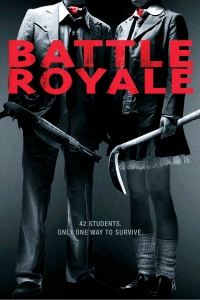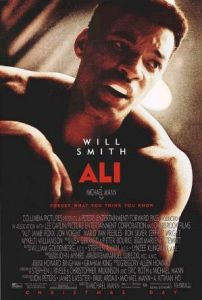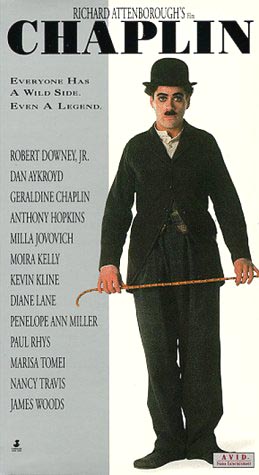 Oh, I miss movies like “Face/Off.” We still have “John Wick” and “Kingsman” and “Mad Max: Fury Road,” sure, but superheroes and perhaps the dark and gritty brand of Christopher Nolan movies have made the truly ridiculous action movie an endangered species and a thing of the past.
Oh, I miss movies like “Face/Off.” We still have “John Wick” and “Kingsman” and “Mad Max: Fury Road,” sure, but superheroes and perhaps the dark and gritty brand of Christopher Nolan movies have made the truly ridiculous action movie an endangered species and a thing of the past.
It was a different time, the ’90s. Pokemon may be back, but the superficially stupid and one-dimensional movies that un-ironically shoved explosions in our faces got replaced in favor of more serious fare. “Face/Off” was the most bananas of them all, and you could say that movies like “Face/Off” disappeared because everything was trying to be “Face/Off.” We have hordes of “Die Hard” copycats and directors pretending to be Quentin Tarantino, but people could only dream that their films could be as stylized as John Woo’s, and as insane as his stories.
Much of that success has to do with Nicolas Cage being on the best role of his life. After winning an Oscar for “Leaving Las Vegas,” he chose to follow that up by claiming the action hero belt away from the Stallones and Schwarzeneggers, starring in “The Rock,” “Con Air” and “Face/Off” within a little over a calendar year. All three were major blockbusters.

Cage plays Castor Troy, who plants a bomb in the LA Convention Center dressed as a dancing terrorist minister. He waltzes over to a singing choir sporting a devilish grin and sneaks a squeeze of a choir girl’s butt, experiencing ecstasy as he does. “You know, I can eat a peach for hours,” he says with a menacing smile. He wields a pair of gold pistols, he flashes his teeth wildly, whips off his sunglasses to make eye contact with the camera.
And then after getting captured by his FBI rival Sean Archer (John Travolta), who seeks revenge after Troy killed Archer’s son, the two switch faces. I repeat: they exchange ‘effing faces.
“John Wick” and others may be stylish, brutal and simplistic, but 2000s movies lack that high concept absurdity that could make “Face/Off” a classic. It doesn’t matter if the dialogue is atrocious, if the pseudo-science doesn’t make a lick of sense or if the surrounding characters are so thick as to possibly think this plan, of surgically giving Archer Troy’s face so that he can infiltrate a prison and get information out of Troy’s brother, is a good idea.
The concept alone is juicy, but Nic Cage being in the role consequently enhances Travolta’s performance, who starts to channel Cage’s mannerisms, his slick and sleazy attitude and villainous posture. Cage doesn’t precisely act like Travolta, but you recognize that the two of them are both giving performances within performances, and you’d be forgiven for confusing the two, thinking Cage somehow inhabits Travolta and was playing the real Castor Troy all along.
Smaller details emphasize the breadth of Woo’s mastery over the form. Inside the prison, where all the guards are one-dimensional monsters, the prisoners wear magnetic boots that lock them to the floor and track their movements, a detail so silly and outrageous that you remember it even though it has no bearing on the story.
Although you could see why Woo’s style would eventually go out of fashion. When a movie is this populated with people diving through glass windows away from explosions in slow motion at domineering low angles, it can get a little old. It’s when he pitches these set pieces at such a high degree of insanity, like the biggest Mexican standoff at the film’s climax, or when “Over the Rainbow” plays over a bullet-ridden bloodbath that would lay the groundwork for “The Matrix.” And don’t forget the doves!
The style and tone that “Face/Off” portrays has become nothing but cliches and has aged poorly, but the film itself hasn’t aged a day. It’s as fresh, exciting and fun as it was in 1997.
 Charlie Chaplin would’ve never cared about the score of the Yankees game. Buster Keaton would’ve never tried for the college football team. It seems absurd that a movie star could actually distinguish themselves by being ordinary, but that’s exactly what Harold Lloyd did. He donned a pair of glasses and transformed himself into an everyman, carving out a niche between Chaplin’s precocious Tramp and Keaton’s stoic clown.
Charlie Chaplin would’ve never cared about the score of the Yankees game. Buster Keaton would’ve never tried for the college football team. It seems absurd that a movie star could actually distinguish themselves by being ordinary, but that’s exactly what Harold Lloyd did. He donned a pair of glasses and transformed himself into an everyman, carving out a niche between Chaplin’s precocious Tramp and Keaton’s stoic clown.

 In Woody Allen’s “The Purple Rose of Cairo,” a movie character in a classic, Old Hollywood, Depression-era costume drama steps out of the screen and falls in love with a woman in the audience. He later pulls her onto screen and into the fold of the movie and shows her a night on the town. A montage of lights and marquees with the two actors walking and smiling in black and white plays, and it’s a perfect, yet unremarkable moment typical of just about any film made from that era.
In Woody Allen’s “The Purple Rose of Cairo,” a movie character in a classic, Old Hollywood, Depression-era costume drama steps out of the screen and falls in love with a woman in the audience. He later pulls her onto screen and into the fold of the movie and shows her a night on the town. A montage of lights and marquees with the two actors walking and smiling in black and white plays, and it’s a perfect, yet unremarkable moment typical of just about any film made from that era.
 The comedies of W.C. Fields have not aged well, but there’s a clear dark side upon watching them today. I can imagine a version of this film in which none of the incompetence, prat fall humor and family comedy would be played for laughs and instead as a dark satire of a depressed, miserable nuclear family.
The comedies of W.C. Fields have not aged well, but there’s a clear dark side upon watching them today. I can imagine a version of this film in which none of the incompetence, prat fall humor and family comedy would be played for laughs and instead as a dark satire of a depressed, miserable nuclear family.
 At the beginning of “Abigail’s Party,” Beverly enters the living room of her home, opens a cabinet full of liquor, and pours herself a drink, her first of what will be many this evening. She’s wearing a low cut, salmon colored dress and a large, garish gold necklace beneath a frumpy Pageboy haircut that’s rounded perfectly above her eyes. In the course of this evening, she will turn out to be a real monster. And that’s saying nothing of her friends.
At the beginning of “Abigail’s Party,” Beverly enters the living room of her home, opens a cabinet full of liquor, and pours herself a drink, her first of what will be many this evening. She’s wearing a low cut, salmon colored dress and a large, garish gold necklace beneath a frumpy Pageboy haircut that’s rounded perfectly above her eyes. In the course of this evening, she will turn out to be a real monster. And that’s saying nothing of her friends.
 Oh, I miss movies like “Face/Off.” We still have “John Wick” and “Kingsman” and “Mad Max: Fury Road,” sure, but superheroes and perhaps the dark and gritty brand of Christopher Nolan movies have made the truly ridiculous action movie an endangered species and a thing of the past.
Oh, I miss movies like “Face/Off.” We still have “John Wick” and “Kingsman” and “Mad Max: Fury Road,” sure, but superheroes and perhaps the dark and gritty brand of Christopher Nolan movies have made the truly ridiculous action movie an endangered species and a thing of the past.

 The thing about Bill Murray movies is, they often don’t work without him. “Groundhog Day” would be a horrible Adam Sandler comedy if anyone but him played the part, and the same is true of “Ghostbusters.” Aside from all the ugly misogyny that’s being thrown at the movie sight unseen, no wonder everyone is freaking out over a remake of “Ghostbusters.”
The thing about Bill Murray movies is, they often don’t work without him. “Groundhog Day” would be a horrible Adam Sandler comedy if anyone but him played the part, and the same is true of “Ghostbusters.” Aside from all the ugly misogyny that’s being thrown at the movie sight unseen, no wonder everyone is freaking out over a remake of “Ghostbusters.” Nostalgia does strange things to people. “WarGames” was a major blockbuster in 1983, the fifth highest grossing movie of the year and even the recipient of three Oscar nominations. I watched it because the film has a prominent place in the book “Ready Player One,” in which the lead character Parzival steps into David Lightman’s shoes and gets to act out the entire movie virtually. And yet it’s strange to think that anyone, even Ernest Cline, would imagine the film has aged well.
Nostalgia does strange things to people. “WarGames” was a major blockbuster in 1983, the fifth highest grossing movie of the year and even the recipient of three Oscar nominations. I watched it because the film has a prominent place in the book “Ready Player One,” in which the lead character Parzival steps into David Lightman’s shoes and gets to act out the entire movie virtually. And yet it’s strange to think that anyone, even Ernest Cline, would imagine the film has aged well. It’d be impossible not to compare “Battle Royale” with “The Hunger Games.” Conceptually, they’re identical. A tyrannical government has instated a law in which teenagers are forced to compete in a fight to the death in order to win their freedom.
It’d be impossible not to compare “Battle Royale” with “The Hunger Games.” Conceptually, they’re identical. A tyrannical government has instated a law in which teenagers are forced to compete in a fight to the death in order to win their freedom. I learned a lot about Muhammad Ali in the wake of his death a few weeks back. His fighting record was stellar, and there are so many wonderful photos of Ali with other geniuses who all saw him as The Greatest, but he’s the most important sportsman of all time because he changed the game and changed the world.
I learned a lot about Muhammad Ali in the wake of his death a few weeks back. His fighting record was stellar, and there are so many wonderful photos of Ali with other geniuses who all saw him as The Greatest, but he’s the most important sportsman of all time because he changed the game and changed the world. A lot of generic biopics about geniuses get a pass because they show an endearing side to a beloved figure. I can swallow a mediocre movie about “The Doors” because Val Kilmer is so electric as Jim Morrison on stage and I love the music.
A lot of generic biopics about geniuses get a pass because they show an endearing side to a beloved figure. I can swallow a mediocre movie about “The Doors” because Val Kilmer is so electric as Jim Morrison on stage and I love the music.